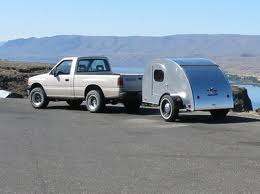
When you see the term “Bug Out Vehicle (BOV),” what comes to mind? Is it a pre-1980’s vehicle without a computer that would be EMP proof? Or possibly a vehicle tailored for bugging out that might be impractical but very, very cool, like the “Survivor Truck”?
While I would love a vehicle like that, it isn’t in the budget or practical. So, I view the vehicle we drive every day as our BOV. While it might not survive an EMP, if we look at Disaster Probability, an EMP is one of the least likely events that we would actually need to bug out for. Let me take a step back and remind you that I am of the opinion that 95% of the time, we would be far better served to stay at home and batten down than to bug out. Because that 5% exists, I think we need to have a plan to do so, and the chances that our vehicles will be running is quite high. I prepare with that in mind.
I do think that there need to be some steps taken to make a vehicle a BOV. First take a look at the area you live in; the terrain and possible routes. If you live in Texas, having chains for your vehicle doesn’t make sense. However, if you live in Idaho, it might make better sense.
We have two vehicles; an SUV that my wife drives and a car that is better on gas mileage that I use for commuting to work. You can see what I keep in my car kit by following the link. If I am home and the need to bug out arises, we’ll take the 4 wheel drive SUV. Because of that, the truck has more gear in it than I keep in the car. Depending on how much time we have to bug out, we’ll add more gear, and could even load up the trailer.
One rule that every prepper should keep for all of their vehicles is that, when it comes to the gas tank, half is the new empty. When your tank gets to half, fill it back up. This will ensure that you’ll have at least a half a tank to get you out of the immediate danger zone if you need to bug out. Letting your tank get too low can actually cause damage to your vehicle as well.
Because the need to bug out comes unexpectedly, that means your BOV needs to be well maintained; oil changes when they’re needed and engines serviced when it is required. Don’t place duct tape over blinking lights or turn the radio up to cover the sounds coming from under the hood.

I think each vehicle should have at a minimum the gear pictured here, it is:
• Flares
• Ice scraper
• Small tool kit
• Goggles (to keep rain or wind out of your eyes)
• Wool blanket
• 4-way tire iron (I won’t carry any other kind, this is a must IMHO)
• Metal Folding Shovel
• Tarp
• Garbage bag(‘s)
• Emergency blanket
• Paracord (this is hard to see, but it’s a 100ft section in between the flares and the garbage bags)
• Fix A Flat
• Jumper Cables
• Map (not pictured)
• Jack (not pictured)
I also think you and your spouse should know how to use fix-a-flat and how to change a tire using the jack you have. If possible, have a full sized spare tire. A 55 mile an hour spare is not meant for a bug out.
You might be thinking that you don’t have a place to bug out to, so you don’t need a bag out plan. I disagree. In bug out myths, I not only explain why I believe everyone needs a bug out plan, but I also give you a great way to make 4 separate bug out plans, even with no owned location to go to.
“The majority of preppers don’t own a separate piece of property that they consider their BOL. The truth is, you don’t need one. Sure, it might be ideal, but it isn’t needed. Below is a way to develop multiple locations. That way you have four routes out of your area. First, if you have a relative or friend outside of your general area, consider asking them if you could head there.
If you don’t have another location to go, I recommend finding a town that’s big enough to have a hotel but small enough to be inconspicuous, which is thirty to sixty miles away. I say “large enough to have a hotel” because that is the landmark. If they have a room available, stay if you like. If you want to continue on, do so. Do this going north, south, east and west. Now develop a couple different routes to each location and label the routes “1” and “2”. We purchased plastic foldable maps and have one in our BOBs and one in the vehicle.
I think each car should have a map and the directions to each location. If you’re at work and your spouse is at home when you need to bug out, you can send a text or email that says “North, route 2”. Now you know where they are going and the route they’re taking to get there.”
At the time of this writing, gas is under $4.00 a gallon and is not being rationed. I can envision several scenarios where gas could be far more expensive and much less readily available. Because of this, you may choose to store fuel.
Please click here to vote for Prepared Christian as a top Prepper site!
If you liked this article please think about sharing it on the social media listed below, thanks!



